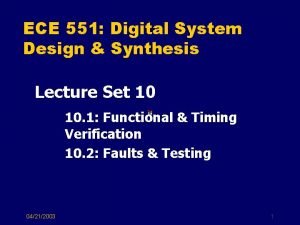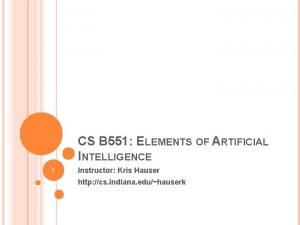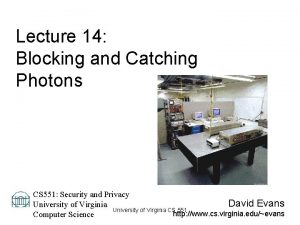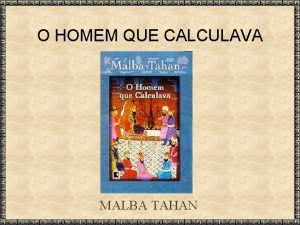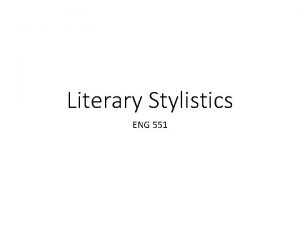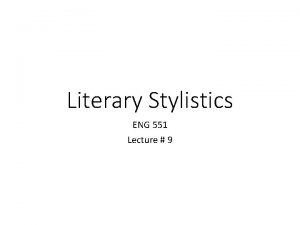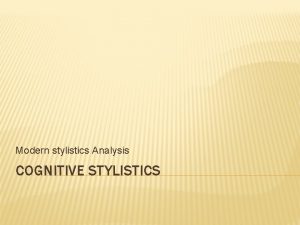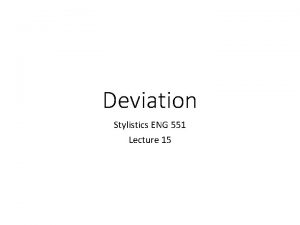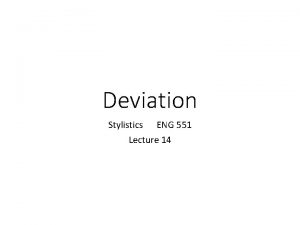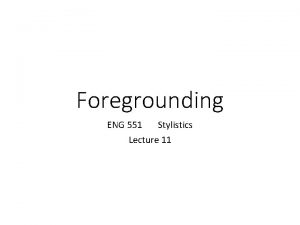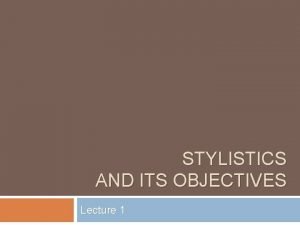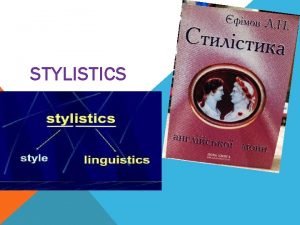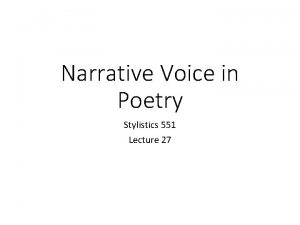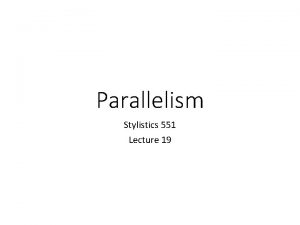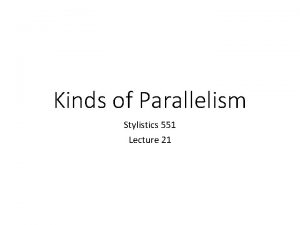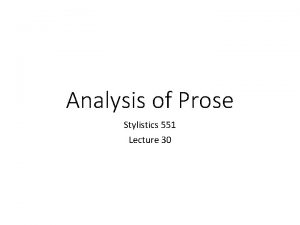Literary Stylistics ENG 551 Lecture 8 Literary Stylistics













- Slides: 13

Literary Stylistics ENG 551 Lecture # 8

Literary Stylistics Most Stylistic analysis has attempted to deal with the complex and valued language within literature. In such examination the scope is narrowed to concentrate on the more striking features of literary language. E. g. its deviant or abnormal features rather than the broader structure. (Crystal, 1987, 71) Cambridge Encyclopedia of language.

Literary Stylistics The compact language of poetry is more likely to reveal the secrets of its construction to the stylisticians than is the language of the plays and novels. Widdowson suggests that poetry is unorthodox language that vibrates with inter-textual implications. Widdowson. Stylistics and Teaching of Literature. Longman: London. 1975

The Case of Poetry Widdowson notices that when the content of poetry is summarized it often refers to very general unimpressive observations such as “nature is beautiful” “life is lonely” “time passes” etc. Like as the waves make towards the pebbled shore, So do our minutes hasten to their end… (Shakespeare) Love, all alike, no season knows nor clime nor hour, days months which are the rags of time. . (Donne)

The Case of Poetry The most obvious of the unconventional styles of language is the language of poetry This language gives us new perspective on familiar themes and allows us to look at them. To place the same, familiar words in a new and refreshing context allows the poet the ability to represent humanity and communicate honestly.

The Limitation Two problems with literary stylistic analysis of poetry : Wetherill “Literary Texts: An Examination of Critical methods” Over preoccupation with one particular feature that may well minimize the significance of others which are equally important Any attempt to see a text as simply as a collection of stylistic elements will tend to ignore other ways whereby meaning is produced.

Approaches in Literary Stylistics, having to do largely with style, is a discipline concerned with the study of language of literature. ” It is the study of language as art. ” As the study of style, it “seeks to examine the expressive and suggestive devices which have been invented in order to enforce the power and penetration of speech. ”

I. Thematic Approach The theme of any literary work is the main idea or message that the author wants to convey. The theme may have psychological, sociological, ethical, or didactic value. It is the skeletal framework or the “peg” from which the whole story hangs. The author comes up with an idea. It obsesses him and he is compelled to express it; to give flesh and all the “trappings” that give it a concrete form; and to embellish it, so to speak, so that it will have both internal and external values. These values distinguish it from all other works of literary art.

I. Thematic Approach Thus, language becomes the author’s main linguistic tool-using sound, meaning, and sentence structure. But apart from the linguistic components, the author will have to clothe his story with style. This is how theme is expanded. Otherwise, there will be no story or poem.

II. Interpretation of Characters Under this approach there are four types of interpretation open to the analysis or stylisticians’ choice: Psychologically oriented interpretation-the characters are representatives of certain mental types. Sociological interpretation the characters are treated as members of a certain moment of social history.

I. Interpretation of Characters Metaphysical interpretation-the characters are images of certain human conditions, e. g. , aggressors vs. victims, the damned creatures in hell, etc. Ethical interpretation-the characters are representatives of a certain morality (or immortality).

I. Interpretation of Characters This is more popularly known as the character analysis approach. Character analysis is an intriguing activity. Teachers often are expected to fall back on their knowledge of psychology in their attempt to help their students to understand the motivations of the characters in the story and how these affect their social behavior and the outcome of the story.

III. The Elements of Narration Explicating a literary selection by means of formal analysis of the elements of narration involves analyzing the structure of the story, i. e. , taking it apart, element by element. What are these formal elements? Most, if not all stories, contain these basic elements: setting, characters, plot. Each of these basic elements can be subjected or further analyzed to give the reader a comprehensive idea of what is meant by “the structure of the story”.




